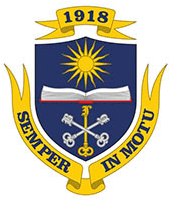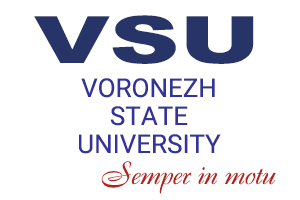The Faculty of Pharmaceutics of VSU remains on the cutting edge of medical science. Today, a group of researchers is working on antiulcer gels based on chitosan. Read on to find out more about this “secret ingredient” and the work on the project.
A group of researchers from the Faculty of Pharmaceutics continues to work on new medicine. The group includes students, associate professors, and PhD students supervised by the Dean of the faculty Alexey Slivkin and Head of the Department of Pharmacology and Clinical Pharmacology Anna Buzlama. Over the past year, the researchers have advanced significantly in their work on antiulcer gels based on chitosan. They have already registered an invention patent and are currently preparing two more applications.
Chitosan is a unique product of chitin processing (a component of the exoskeletons of crustaceans). Recently, chitosan has been widely used as a means of detoxication and weight loss. Thanks to VSU researchers, chitosan will also serve as an active substance in antiulcer gels.
Using the models of NSAID induced gastropathy and stress ulcers, they have proved that gels containing chitosan and dexpanthenol demonstrate antiulcer activity. Such gels are even more effective then existing gastroprotective drugs (Maalox, Sucralfate, and De-Nol). The researchers also demonstrated that chitosan-based gels can prevent the main toxic and organotropic side-effects of a sodium diclofenac overdose (a popular anti-inflammatory drug). The conclusions made by the researchers are based on the results of a series of pathoanatomical, histological, hematological, and biochemical studies.
Professor Alexey Slivkin, together with his colleagues, started studying the possibilities of using chitosan in medicine over 20 years ago. There are now over 80 scientific publications regarding this problem, several dissertations, and 7 invention patents. Antituberculosis, local anesthetic, and wound healing drugs have been developed.
The project is now conducted within international partnership with the participation of a PhD student from Syria Solaiman Hasseb Doba. He conducted a study that determined the optimal composition of the drug. Thus, the research is beneficial not only for the modern pharmaceutics, but for the development of the university’s international relations.
“During our study, day by day, the results were becoming more and more interesting. Both in terms of positive and negative results. I was especially fascinated by the fact that they all were connected and explained each other. Working with chitosan is not easy. It is a challenge to create orally administered drugs based on chitosan and find compatible active components,” said Solaiman Doba.
To analyse and assess the performance of antiulcer gels the researchers used
- 3 types of chitosan
- 5 auxiliary components
- 6 additional active ingredients
- 5 different experimental models
The study also included non-clinical experiments on 400 laboratory animals.
“I found it hard to work with laboratory rats and mice, so after completing the PhD programme I plan to develop new methods for studying medicinal drugs without testing them on animals,” said Doba.
Despite the importance of the task set by the faculty, the research and education processes proceed in a friendly, home-like atmosphere. You feel it straight away when you enter the building. You can hear students and academic staff chatting both about their daily life and academic matters. Such an atmosphere is what makes VSU students successful, and they are grateful for it. As Solaiman Doba says:
“One of the reasons why I like this profession and work in a pharmacological laboratory is the support of my research supervisor”.
Text: Irina Golik










